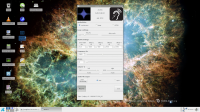Hi Steve, I was just about to start programming my own ACR like generator using PureData or Max, based on the info in the paper by Peter Tass (attached). The trouble is, it doesn't give enough info on frequency periods.
When talking about frequency, it says that the 4 tones (f1-f4) in the sequence range from 0.5ft (ft is your tinnitus frequency, so 0.5 times your tinnitus frequency) to 2ft (so 2 times your tinnitus frequency). It says that the tones are equidistantly placed on a logarithmic scale between the two extremes, so have equal distance between each on the scale, but it doesn't say what the logarithmic scale is (or rather what base they are using?) - it could be anything - or even if they start the intervals dead on 0.5ft up to 2ft. It could be anywhere in between. But it means it will definitely be a different period for each ft frequency, so isn't as simple as -1000KHz -500KHz +500KHz +1000KHz or similar.
It says timings are kept within the lower delta regions and are it 1.5Hz per cycle, which means the 4 notes should be evenly spread across 0.666 (recurring) of a second, so each tone should last 0.166 (recurring) second.
I think without the proper frequency logarithm, it will be impossible to replicate.
Also, the mp3s you have put up for download seem to have some aliasing or some other distortion (perhaps from the mp3 conversion, perhaps from Reason?) which is generating a lot of harmonics around each tone. With the higher frequencies too, the ADSR on your sampler is set to open too quickly, resulting in each note's attack starting with a clicking artefact which will inhibit the perceptibility of the tone - it may just be a DC offset - you could try increasing the attack by a few ms until this disappears.
I'm really interested in getting a DIY ACR model up and working, but it looks like it could be pretty challenging.
Best,
Henry



 Member
Member Founder
Founder